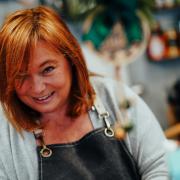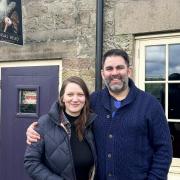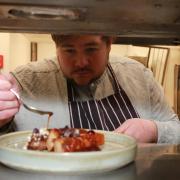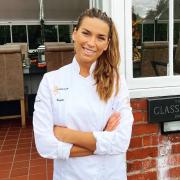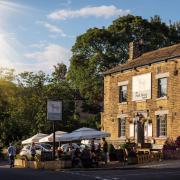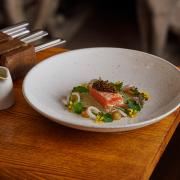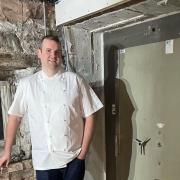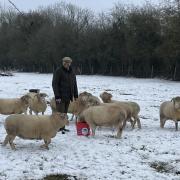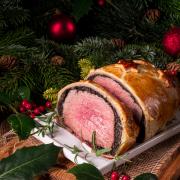Small really is beautiful for one Derbyshire village fish and chip shop, whose new owner is determined to make it the most sustainable business in the Peak District.

When Peter Grafton and his wife Kirsten took over a Peak District fish and chip shop in 2018 they knew they had a challenge on their hands. Village chippies are often small, but Stoney Middleton’s is squeezed into a tiny, two-roomed former toll house beside the busy main road with no parking or inside seating. The listed building has a usable floor space of just 270 square feet and if a queue begins to form (as it frequently does) people tend to snake out of the door and down the street.
The eye-catching property was built in 1840 at a cost of £144 in order to charge for the use of the newly created road, which had been blasted through Middleton Dale to provide an easier alternative to the fearsomely steep high street. The unusual octagonal shape of Toll House was designed to match that of nearby St Martin’s, the village church, and if funds hadn’t run out it would have had a second floor as well.
A Grade II listed fish and chip shop is unusual enough, but remarkably Toll House has been the village chippy since as far back as 1926. Past owners have included the renowned Elenor Hall, who served up fish suppers from 1944 to 1970 and changed the original coal-fired fryer to gas.
‘She also ran a fish shop up the road in Eyam,’ says Peter, ‘and was clearly one of those commanding and strong-willed women that local people still talk about today. They say she didn’t stand for any nonsense and would march up to queuing customers and dispense clips round the ears to unruly children.’

With such a limited space for manoeuvre and no possibility to extend, Peter and Kirsten’s business approach is very focused. After a career spent running successful companies, including plenty of overseas travel, Peter knows that customer care and quality product are everything. ‘We both like socialising and meeting people,’ explains Peter, ‘which is why we chat to everyone who walks in the door and make sure that every customer gets a warm welcome. Given the rather tight space it can get quite intimate and jolly!’
They also know that it’s really important to serve up tasty fish and chips, building on the good reputation of previous owners Barry Ridgeway and Wayne Jagger, who made Toll House popular not just with a local audience but also an essential stop-off for passing customers. However, with no previous experience of the fish and chip shop trade, it was a steep learning curve for Peter if he was to become a proper master fryer.
‘I thought I could just pop a piece of fish in the fryer like anyone else and that would be that,’ admits Peter, ‘but I quickly learned that there’s an art to producing the perfect fish supper.’ So he took himself off on a fish-frying excellence course run by award-winning master fryers and was taught all about the science and techniques by the experts. From testing the potatoes for starch to choosing the best fish, Peter and his team of eight (including Kirsten and their children Harry and Melissa) have now perfected their craft – to the evident satisfaction of their customers who keep coming back for more. ‘We offer MSC-certified cod and haddock, all of it skinless and boneless,’ says Peter, ‘and we go for large Icelandic cod which has a whiter flesh and is really tasty.’
All the fish is cooked to order and they will try and please specific requests, including double frying chips for a crispier finish and even perfecting an extra-soft batter to meet the taste of one regular customer.

As well as specials like calamari (squid rings), the Toll House menu also includes fritters, pies, Yorkshire fishcakes and pigs in blanket, as well as vegetarian choices such as garlic cheese balls and veggie sausages, since the shop uses rapeseed oil which is free from meat fats. Peter also hopes to offer fish pie soon – ‘but I’m still trying out different recipes at home until I find one that really works.’
Widely considered the national dish of Great Britain, fish and chips first appeared together on our plates around 1860. It’s thought fried fish was introduced to London by Jewish immigrants from Portugal and Spain two centuries earlier; and fried potatoes cut into chips probably came over from Belgium. Very soon fish and chips became a staple of the new industrial working class diet, providing a cheap, hot and nourishing meal. By the late 1920s it was reckoned that there were as many as 35,000 chippies on high streets across the land; and such was its cultural and morale-boosting importance that it was one of the few foods not to be rationed during the Second World War (Churchill famously referred to fish and chips as ‘good companions’).
A sustainable future
Running a catering business from a diminutive, octagonal-shaped listed building is certainly challenging (try finding somewhere to store the potato delivery!); and so, too, is dealing with the packaging that is involved in selling take-away food. From the start, a key objective for Peter was to reduce the sheer amount of packaging and move away from plastic to more sustainable options. The shop has switched from the ubiquitous plastic bag to brown paper bags in four different sizes and strengths, and polystyrene trays and pea tubs have now been replaced by strong paper substitutes. Plastic forks have also given way to biodegradable wooden ones. Regular customers are being offered a discount if they bring in their own plates and containers; and if you supply your own cup you can get a free hot drink from the shop.
However, going green hasn’t been easy. ‘It’s been surprisingly difficult to find more sustainable types of packaging,’ admits Peter, ‘and I’ve often had to search far and wide for the right supplier. Of course, none of this has come cheaply, but we’ve absorbed the additional packaging costs because we believe it’s the right thing to do and our children deserve better.’
He estimates that the changes will save over 30,000 items of packaging a year from the shop going to waste, the majority of which would ultimately have ended up in landfill. Now, the next challenge is for the business to cut down on its own waste, such as cardboard and plastic, but again the limited space is a problem with next to no room outside for additional wheelie bins.
‘We are probably one of the smallest chip shops in the country,’ says Peter, ‘but that doesn’t stop us being leaders when it comes to packaging and plastic waste. I wish the big boys would follow – if we can afford to, they can too.’
Fish and chips remain a class double act and without doubt a national cultural and culinary symbol. And yet miles from the nearest seaside promenade or city street corner, a village chippy squeezed into an eccentric little building in landlocked rural Derbyshire is ensuring that this tasty tradition continues to have a bright future.
Shop opening times: Wed–Sat 11.30am-8pm, closed Sun–Tues. To find out more about Stoney Middleton’s heritage and historic buildings go to www.stoneymiddletonheritagecentre.org




